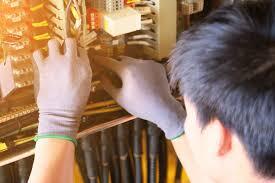Office buildings rely heavily on technology each day. From lights to computers, security cameras, and WIFI, everything requires technology to work seamlessly. However, when power issues arise, everything comes to a halt. System crashes, employees can’t complete their work, and, above all, safety can be at risk. That’s where low voltage systems can help create a protected environment for everyone. These systems are designed to distribute power efficiently, reducing the risk of overloads and interruptions.
Here are five simple ways low voltage systems help keep office buildings running smoothly.
1. Smarter Power Distribution
Low voltage systems help divide power safely between multiple parts of the office building. They don’t put too much load on a single circuit; instead, they spread it evenly. They prevent equipment from shutting off, reduce the risk of electric shocks, and protect light from flickering.
In large corporate workplaces, where dozens of devices operate simultaneously, this balanced distribution is crucial. It ensures that each department or floor receives the correct amount of power, neither more nor less.
2. Protecting Sensitive Equipment
Offices depend on computers, printers, and network systems that are sensitive to power fluctuations. Even a minor voltage spike can damage them or cause data loss.
Low voltage systems provide stable power, protecting these electronics from sudden surges or drops. They maintain consistent energy levels and prevent costly repairs. Reliability is crucial for IT departments and businesses that heavily rely on servers and digital systems.
3. Better Energy Efficiency
Low-voltage wiring uses less power overall, making it a more energy-efficient option. It means fewer electricity bills and less strain on the main electrical grid.
For instance, lighting systems connected through low-voltage wiring can use LED technology and sensors to reduce waste. When employees leave the meeting room or office, the lights automatically turn off, saving power and extending the life of the bulbs.
Therefore, low voltage systems not only protect power but also use it more efficiently.
4. Supporting Backup Power and Safety Systems
During a power outage, safety systems such as emergency lighting, alarms, and security systems must still function. Low-voltage wiring enables these systems to connect more easily with backup generators or battery-powered supplies.
It keeps your building safe and functional even after the main power goes down. Employees can easily locate what exists, and important data remains protected until normal power is restored.
It’s a small yet vital part of any safety plan for offices in Texas, where the weather can be unpredictable and cause sudden outages.
5. Reducing Maintenance and Downtime
As low voltage systems are safer and slower, they require less maintenance compared to traditional high-voltage wiring. Electricians can easily upgrade or inspect connections without any disruptions. It keeps the office running without any hurdles or long breaks.
Less maintenance means fewer surprises, which in turn contributes to improved workplace productivity. When your building’s systems are reliable, employees can work with full dedication without worrying about lost connections and flickering lights.
Final Words
Low voltage systems operate quietly behind the scenes, yet play a crucial role in keeping office buildings safe, efficient, and connected. From protecting sensitive equipment to saving energy and reducing downtime, they protect power issues before they start.
Therefore, investing in low-voltage wiring has become an essential technical choice for modern workplaces. In fact, it’s the key to keeping operations smooth and secure every day.




